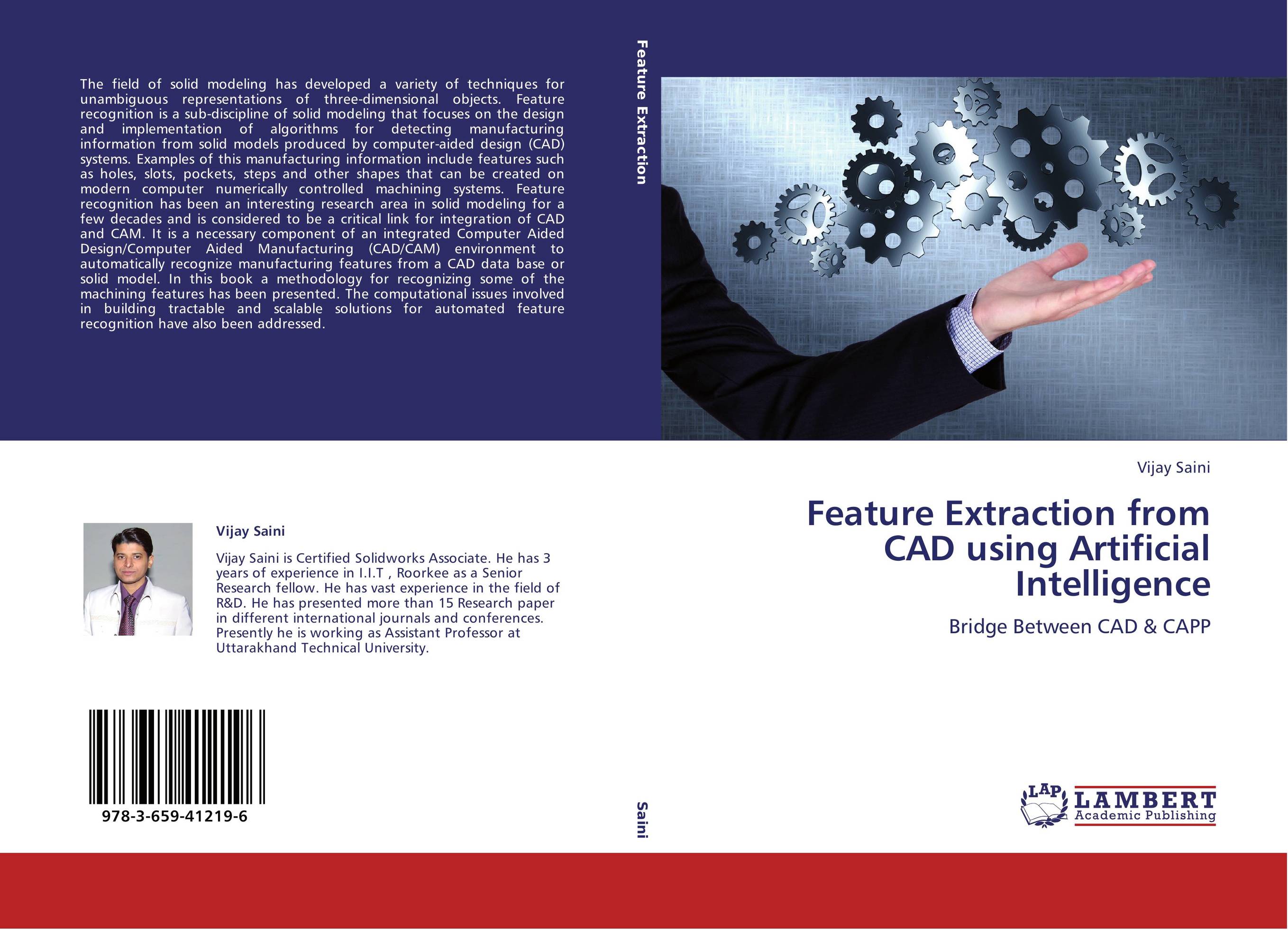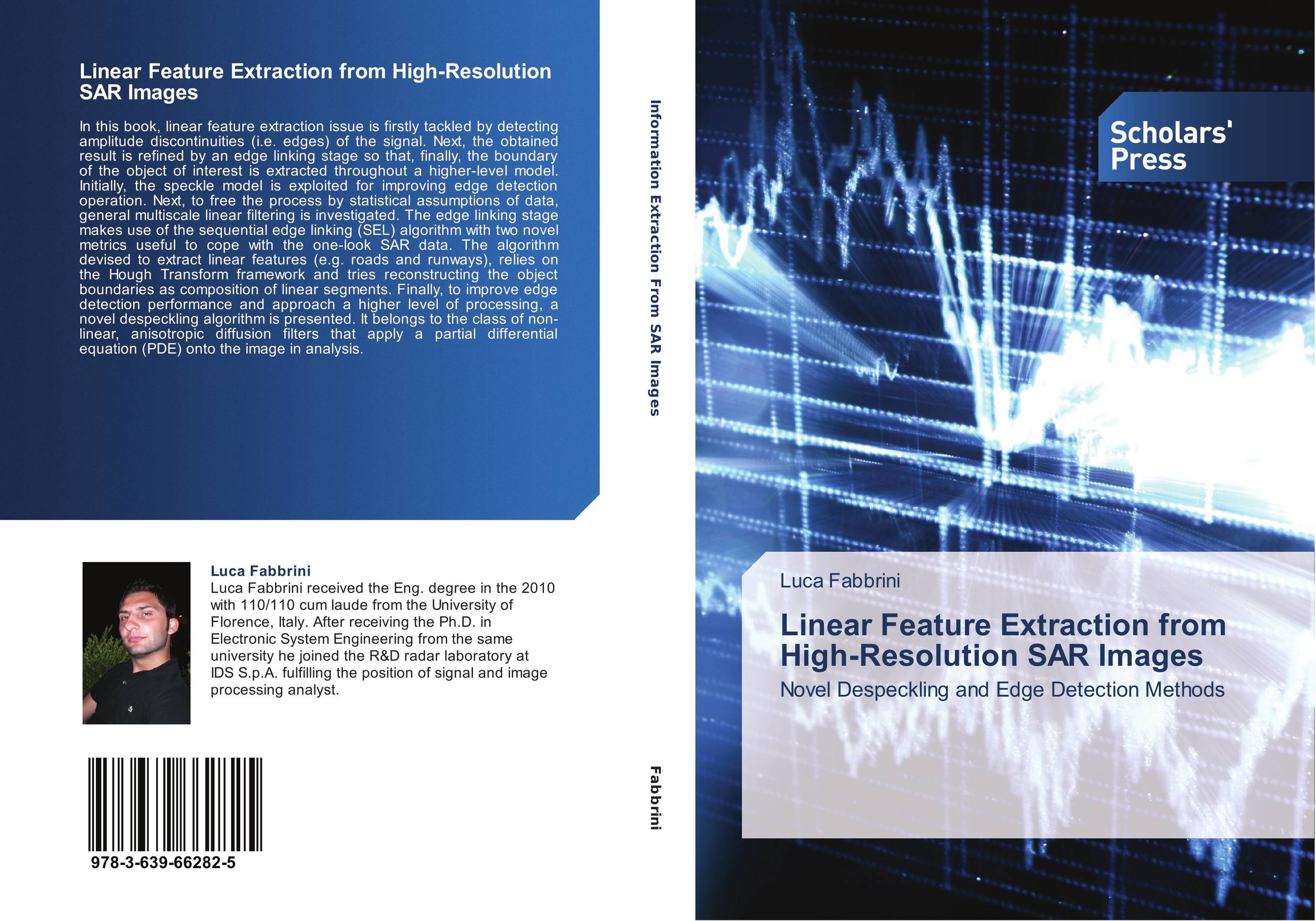| Поиск по каталогу |
|
(строгое соответствие)
|
- Профессиональная
- Научно-популярная
- Художественная
- Публицистика
- Детская
- Искусство
- Хобби, семья, дом
- Спорт
- Путеводители
- Блокноты, тетради, открытки
Feature Extraction from CAD using Artificial Intelligence. Bridge Between CAD & CAPP

В наличии
| Местонахождение: Алматы | Состояние экземпляра: новый |

Бумажная
версия
версия
Автор: Vijay Saini
ISBN: 9783659412196
Год издания: 2013
Формат книги: 60×90/16 (145×215 мм)
Количество страниц: 140
Издательство: LAP LAMBERT Academic Publishing
Цена: 39449 тг
Положить в корзину
| Способы доставки в город Алматы * комплектация (срок до отгрузки) не более 2 рабочих дней |
| Самовывоз из города Алматы (пункты самовывоза партнёра CDEK) |
| Курьерская доставка CDEK из города Москва |
| Доставка Почтой России из города Москва |
Аннотация: The field of solid modeling has developed a variety of techniques for unambiguous representations of three-dimensional objects. Feature recognition is a sub-discipline of solid modeling that focuses on the design and implementation of algorithms for detecting manufacturing information from solid models produced by computer-aided design (CAD) systems. Examples of this manufacturing information include features such as holes, slots, pockets, steps and other shapes that can be created on modern computer numerically controlled machining systems. Feature recognition has been an interesting research area in solid modeling for a few decades and is considered to be a critical link for integration of CAD and CAM. It is a necessary component of an integrated Computer Aided Design/Computer Aided Manufacturing (CAD/CAM) environment to automatically recognize manufacturing features from a CAD data base or solid model. In this book a methodology for recognizing some of the machining features has been presented. The computational issues involved in building tractable and scalable solutions for automated feature recognition have also been addressed.
Ключевые слова: Artificial Intelligence, Feature extraction, artificial neural network, CAPP, CAD/CAM
Похожие издания
 | Prasadi Thilanka Senadeera and Mauro Castelli AUTOMATION OF ROAD FEATURE EXTRACTION FROM HIGH RESOLUTION IMAGES.. 2024 г., 68 стр., мягкий переплет Road feature detection from remotely sensed images is crucial for maintaining an up-to-date and reliable road network, essential for transportation, emergency planning, and navigation. While convolutional neural networks have shown promise in automating this process, existing methods often trade off accuracy for complexity. This study aims to... | 27379 тг |
 | Отрасли знаний: Общественные науки -> Экономика MUNDLURU DHARANI and G SREENIVASULU MACHINE LEARNING ALGORITHMS. OBJECT IDENTIFICATION BASED ON FEATURE EXTRACTION FROM MULTISPECTRAL SATELLITE IMAGES USING PRINCIPAL COMPONENT ANALYSIS. 1905 г., 156 стр., мягкий переплет Remote sensing is immensely useful for gathering data from Earth-surface objects without coming into direct contact with them. Multi-spectral satellite images are essential for data analysis in the fields of agriculture, regional planning, geology, meteorology, forestry, landscape, biodiversity conservation. Enhancement is the best method for... | 43715 тг |
 | Отрасли знаний: Точные науки -> Информатика и программирование Luca Fabbrini Linear Feature Extraction from High-Resolution SAR Images. Novel Despeckling and Edge Detection Methods. 2014 г., 312 стр., мягкий переплет In this book, linear feature extraction issue is firstly tackled by detecting amplitude discontinuities (i.e. edges) of the signal. Next, the obtained result is refined by an edge linking stage so that, finally, the boundary of the object of interest is extracted throughout a higher-level model. Initially, the speckle model is exploited for... | 65638 тг |



